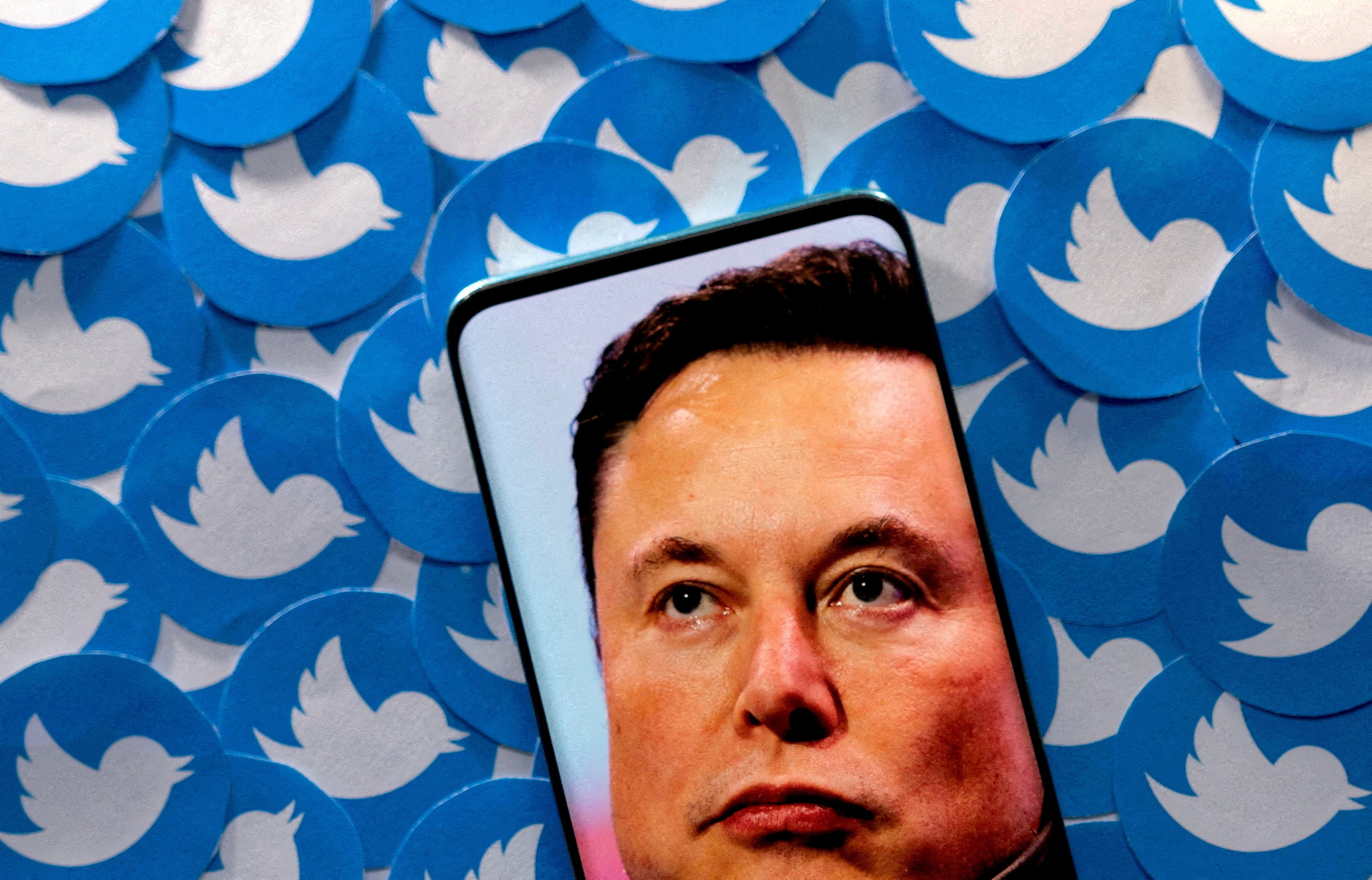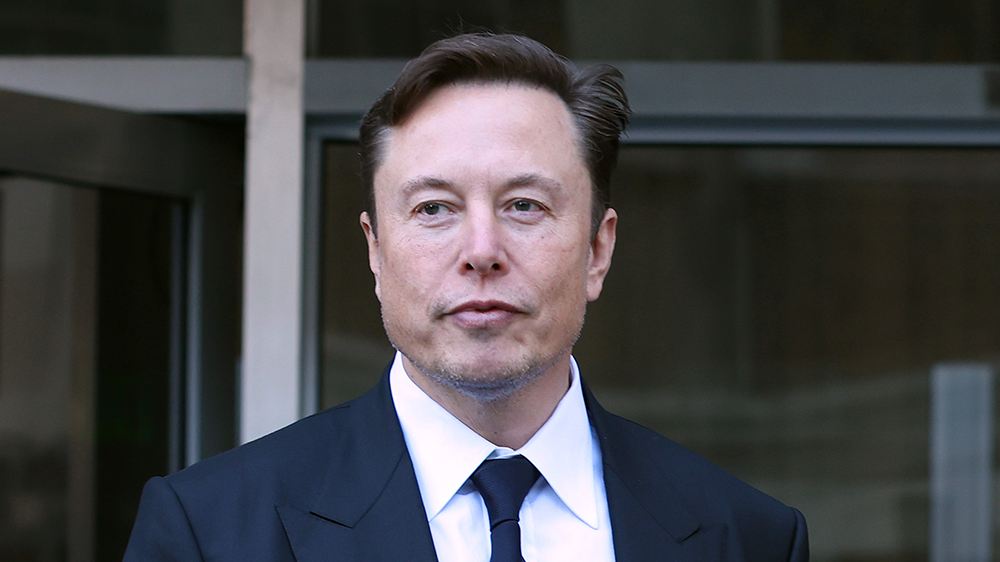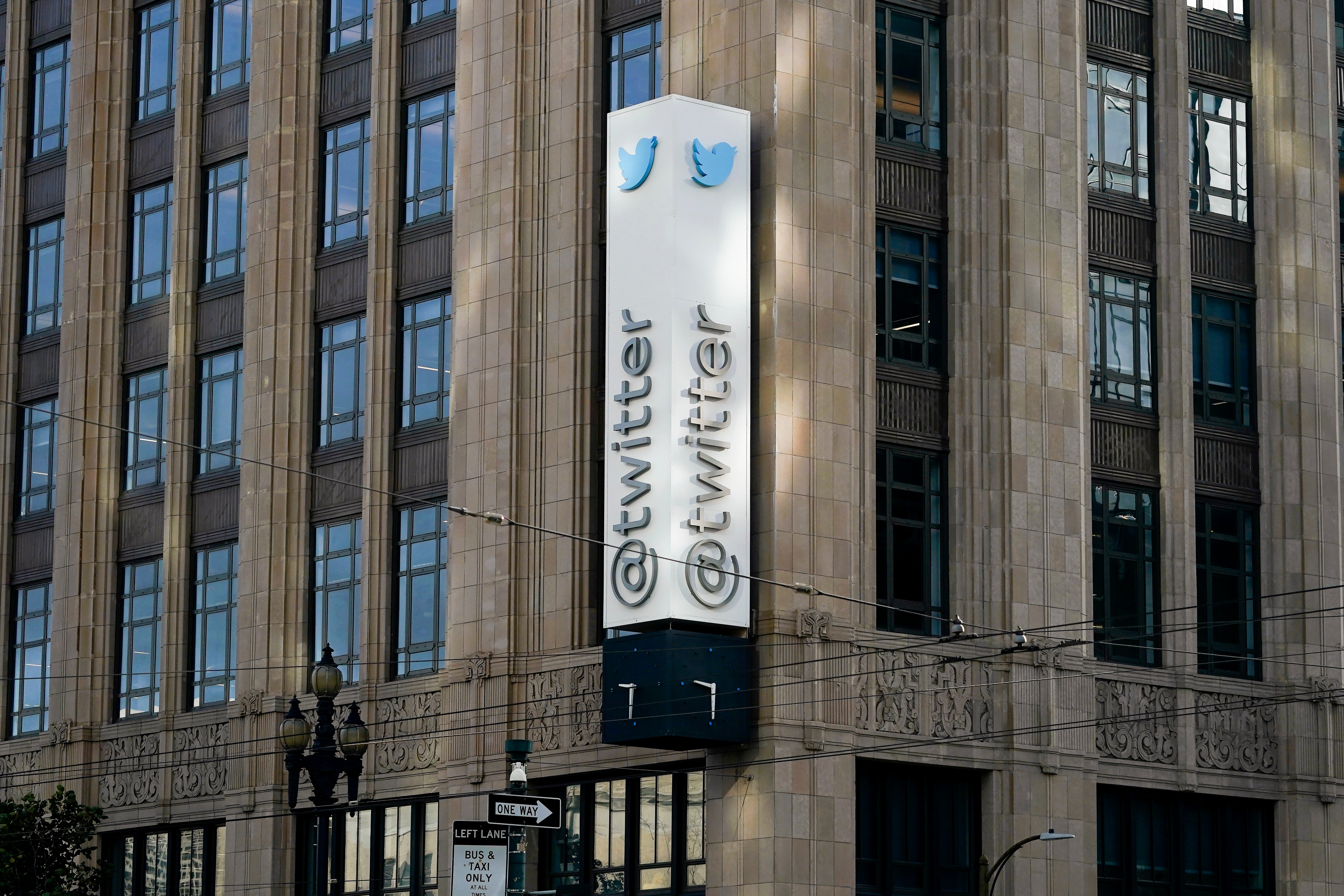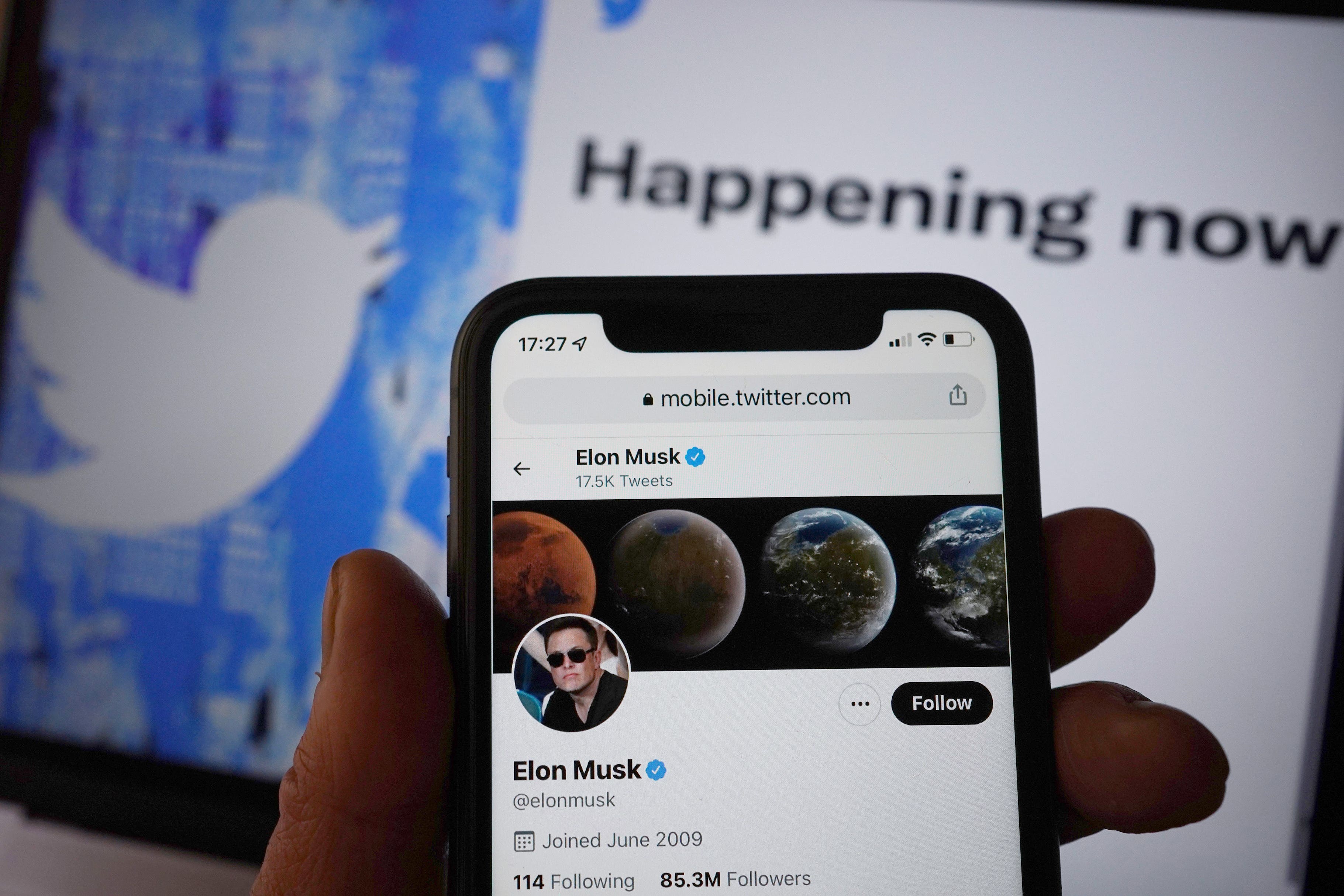How Elon Musk is reinventing Twitter for himself
Faiz Siddiqui and Jeremy B Merrill speak to former employees about changes that have occurred since the app’s takeover by the billionaire in October

Nearly four months into Elon Musk’s ownership of Twitter, one of the most influential social media websites has been transformed into a mercurial billionaire’s personal sandbox.
Twitter users knew the site would change under Musk, who purchased the company in October for $44bn and installed himself as CEO on a promise of restoring “free speech”. What many underestimated was the extent to which Musk would make wholesale changes with the potential to disrupt the experience across the site for his own benefit.
That approach was illustrated dramatically this week when the site Platformer reported Twitter had made major algorithmic changes – on Musk’s orders – that resulted in users seeing the billionaire’s tweets first. Musk had been worried that his engagement was declining: his tweet throwing support behind the Philadelphia Eagles in the Super Bowl had not performed as well as President Biden’s, for example. The fix that Twitter rolled out pushed Musk’s tweets to the top of many users’ feeds, something widely noted by users.
Twitter’s public data backs that up. A new feature displaying view counts on tweets that rolled out late last year showed Musk’s tweets at the time were driving massive engagement, including more than 1 billion views on 18 December, for example. All in all, Musk’s tweets on a typical day in December were shown 231 million times.
But that number dropped off substantially this year. Between 1 January and the Super Bowl, Musk’s tweets were shown only 137 million times on a typical day. This week, after his posts were artificially boosted, he’s back up to around 400 million per day.
Musk is a prolific Twitter user, who has a penchant for tweeting his mind and sometimes landing himself in trouble in the process. Appearing in court last month over an infamous 2018 tweet he had “Funding secured” to take Tesla private at $420 a share, Musk said he sees the site as an effective way to communicate with the public, both to disseminate company information and “memes”.

Musk and Twitter did not immediately respond to a request for comment.
Musk has nearly 130 million followers, making him one of the site’s most popular users. He first indicated he was pursuing Twitter in April, saying he wanted to restore “free speech” and tackle the site’s persistent problem of spam and bots.
But several former Twitter employees, including some with direct knowledge of the issues he prioritised, say Musk’s changes were often geared toward improving his own user experience. Data has emerged showing how he has benefited from the changes, and examples have piled up month after month of specific actions geared toward improving his personal experience on the site. The former employees spoke on the condition of anonymity for fear of retribution.
At Twitter, Musk has bent the company to his impulses in ways that might be less feasible at publicly traded Tesla, where he also serves as chief executive, and which has a corporate board, unlike Twitter.
And at one point, Musk was so hellbent on eliminating spam and bots on the site, for example, that Twitter – which uses phone numbers to verify the authenticity of accounts – banned entire country codes from its system, according to the people with knowledge of the matter.
That created a problem: one of the countries affected, Ukraine, is in the midst of a prolonged war with Russia, where social media has played a key strategic role. Ukrainians suddenly found they could not post on Twitter.
And since Musk took over as Twitter CEO, the list of major changes includes several with a direct benefit to Musk, former employees say, with little potential upside for the rest of the users.
Our impression was just that he was describing his very specific experience as a Twitter user and Elon Musk is not a typical Twitter user
In December, Twitter adopted a new policy banning live-location sharing so that accounts such as one publishing the whereabouts of Musk’s private jet could no longer post that information to Twitter in real time. Musk blamed an alleged stalking incident on the account – which he had previously held up as proof of his commitment to free speech – but police later said they had not established a link between the two.
After banning the jet account, Twitter banned journalists who had posted about it, as Musk baselessly accused them of posting “basically assassination coordinates”. He backed down under public pressure, but only if the users deleted the offending tweets.
The prior month, after a swarm of Musk impersonators surfaced in the wake of Musk’s announced changes to Twitter’s check-mark verification system, Musk adopted a zero-tolerance approach to verified users posing as others.
The new policy resulted in immediate bans on users who did not specify they were engaged in parody while posing as public figures. That resulted, for example, in comedian Kathy Griffin getting banned from the site, although she was restored later in November.
One of the former employees says Musk’s aggressive focus on impersonation emerged as top Twitter officials circulated examples of accounts parodying Musk himself.
“And all the ones that were being sent to us were using his image,” the former employee recalls, referring to Musk, who was part of the conversations.
The order to nab impersonators filtered down through a Musk deputy, after it became clear he had grown concerned.

“Going forward, any Twitter handles engaging in impersonation without clearly specifying ‘parody’ will be permanently suspended,” Musk posted on 6 November, announcing the new policy.
Meanwhile, Musk stoked division over what he called the “lords and peasants system” for awarding verification check marks.
One of his key ideas for driving revenue was charging $8 a month for the signature blue badges, as Musk pledged to phase out the older, “corrupt” ones held by users including many journalists and public figures. Musk has phased out the public relations department at Tesla and dramatically pared down the communications staff at Twitter, which no longer typically responds to media requests.
Even before he bought Twitter, Musk’s emphasised the site’s need to crack down on spam and bots, particularly those shilling cryptocurrency.
“If our Twitter bid succeeds, we will defeat the spam bots or die trying!” Musk posted on 21 April, shortly before the deal was made, a day before he decried what he said were verified “scam crypto bots” on the site.
It wasn’t that crypto bots weren’t a problem.
“All the examples were pretty unique to him, but there were these long-standing issues that overlapped,” one of the former employees recalls.
Musk’s pronouncements about the problems plaguing Twitter even before the takeover were often raising alarms about issues that were far from the typical user’s experience, according to the former employees.
“I remember people on our team thinking he’s having a very personal experience unique to him on the platform,” says one of the former Twitter employees, speaking on the condition of anonymity for fear of retribution. “Our impression was just that he was describing his very specific experience as a Twitter user and Elon Musk is not a typical Twitter user.”
Musk has also acknowledged mistakes. In December, as Musk was in Qatar attending the World Cup Final, Twitter rolled out a policy banning the promotion of other social media sites, such as Instagram, and prohibiting users from pushing links to competing sites such as Mastodon. The move led to swift backlash, including from some Musk supporters who said the new policy flew in the face of his free speech commitment, and Musk backed down later that day.
He then launched a poll asking whether he should step down as Twitter CEO. After respondents to the unscientific survey voted yes, Musk committed to finding a new CEO. By mid-February, no clear candidate had emerged and Musk said at an international summit this week that he probably would need until the end of the year to find a successor.
Since taking over, he has cut Twitter’s staff by more than two-thirds, and engaged in an aggressive campaign of cost-cutting targeting Twitter’s workplace and infrastructure, reorienting the company around what he regards as his star team of engineers. He has installed loyalists in key roles, and brought in engineers from his other companies, including Tesla, to oversee the site’s operations.

Before taking over, he had heaped criticism on his predecessors’ approach to content moderation, casting them as a pro-censorship regime that was stifling free speech. That led Twitter to restore many previously suspended accounts, such as that of former president Donald Trump, and lift bans on thousands of previously suspended accounts under an amnesty policy. Meanwhile, his team has rolled out a system of different-colored verification check marks to distinguish between government, business and other verified accounts.
The most dramatic change to the user interface of the site is the rollout of an algorithmic feed, similar to what users might encounter on apps such as Instagram or TikTok, a departure from Twitter’s largely chronological structure in the past. Instead of defaulting to the latest tweets, users are now shown a curated selection of posts that might interest them – a move driven by the pressures of the attention economy, but one that some regarded as a departure from Twitter’s roots and role as a news aggregator.
That played a role in pushing Musk’s tweets at times this week to the top of users’ feeds, where they appeared under a section labeled “For You”.
Even his early interest in purchasing the site was at least partially driven by its ban on the conservative satire site the Babylon Bee, according to text messages revealed in court, a site he had repeatedly praised and pushed as an alternative to The Onion.
In late January, Musk set his account to private – as he said he was conducting an experiment related to the visibility of his tweets.
He said he was going private to test “whether you see my private tweets more than my public ones”.
He talked about his following on a Tesla earnings call earlier that month.
Musk was asked about the potential brand risk to Tesla brought on by his vocal expression of political opinions. It was a rare instance in which Musk was confronted with the prospect of declining popularity.
“Let me check my Twitter account. So I’ve got 127 million followers,” he said in response. “It continues to grow quite rapidly. That suggests that I’m reasonably popular.”
He added: “I might not be popular [with] some people but for the vast majority of people, my follower count speaks for itself.”
Joseph Menn contributed to this report
© The Washington Post






Join our commenting forum
Join thought-provoking conversations, follow other Independent readers and see their replies
Comments